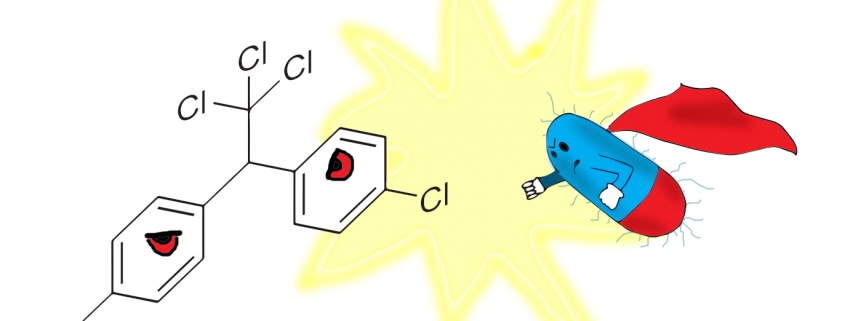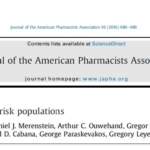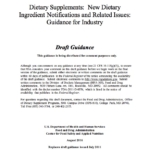It Needn’t End Up Toxic
December 2016. By Gregor Reid PhD FRSC, Lawson Health Research Institute and Western University, London, Canada – November was a dramatic month with the shock Trump US Presidential victory, Earthquakes in New Zealand and Japan, and the “Prophet of Doom” in South Africa finally brought to justice for spraying pesticides in the faces of the faithful to cure their cancers and HIV infections. While global warming has believers and non-believers, the ability of humans to massively pollute the planet is indisputable. The US Environmental Protection Agency’s 2010 National Lakes Assessment found that nitrogen and phosphorus pollution affected almost 20 percent of the 50,000 lakes surveyed (1). Use of pesticides, herbicides and fertilizers in food production is high in many countries that provide food for those of us who want our favorite fruits on demand all year. I believe, it’s time to care about these issues and how our body copes with toxic chemicals.
Could it be that the microbes in our airways, skin and gastrointestinal tract are providing more of a barrier function than we ever thought? The ability of microbes to degrade oil and waste has long been known and used as part of the strategy to clean up our environment. In humans, many chemicals interact with P450 enzymes in ways that can lead to reactive products that evoke toxic and/or carcinogenic effects, or to chemically inert products that are removed from the body (2). In addition, the microbiota can affect cellular detoxification through enhanced cytochrome P450 (CYP) enzyme activity (3). So, the potential for some lactic acid bacteria (LAB) and probiotic microbes to supplement this process is now being explored.
LAB can degrade some organophosphate pesticides that are known to contaminate milk. In addition, using a Drosophila model, we recently showed that L. rhamnosus GR-1 and other strains can reduce toxic organophosphate exposure by passive binding (4) and by countering immune suppression (unpublished). Using a C. elegans model, a Lactobacillus casei gavage was found to upregulate the phase-II detoxification enzymes coding genes metallothioneins (mtl-1 and mtl-2) and glutathione-S-transferase (gst-8) and thereby eliminate organophosphorus insecticide malathion from the host (5).
While skin ointments are being developed for the military to protect against chemical warfare agents such as sulfur mustard and VX, they can also block parathion pesticide and acrolein irritants (6). The potential for probiotic strains and lysates to up-regulate the skin barrier is also being examined, although not yet against adsorption by toxic chemicals (7,8).
Some LAB can bind to heavy metals and express antioxidative properties to protect against heavy metal toxicity. Although only so far shown in mice, L. plantarum CCFM8610 was protective against acute and chronic cadmium toxicity through decreasing intestinal Cd absorption, reducing tissue accumulation, alleviating tissue oxidative stress, and even reversing hepatic and renal damage (as reviewed in 9). In other words, multiple mechanisms are at play. The human study we performed in Tanzania, showed children and pregnant women are indeed exposed to mercury and arsenic, likely from consumption of fish from Lake Victoria, and daily intake of L. rhamnosus GR-1 supplemented yogurt significantly reduced metal uptake (10). This is stimulating others to examine metals responsible for neurotoxicity and cognitive development of children.
In summary, I am heartened that people are (albeit slowly) now considering employing so-called beneficial microbes to protect us from some of the toxic effects of environmental chemicals. Lowering exposure to, and use of, these compounds will take a paradigm shift in how we view what we eat and how we treat the land. But, by empowering consumers through probiotic food and supplement options, we may be able to save some lives and improve a whole lot of others. In the end, it really needn’t end up quite so toxic thanks to our tiny microbial helpers.
Papers cited
1. https://www.epa.gov/nutrientpollution/where-occurs-lakes-and-rivers
2. Shimada et al. Binding of diverse environmental chemicals with human cytochromes P450 2A13, 2A6, and 1B1 and enzyme inhibition. Chem Res Toxicol. 2013 Apr 15;26(4):517-28
3. Collino S, et al. Metabolic signatures of extreme longevity in northern Italian centenarians reveal a complex remodeling of lipids, amino acids, and gut microbiota metabolism. PLoS One. 2013;8(3):e56564.
4. Trinder M, et al. Probiotic Lactobacillus rhamnosus reduces organophosphate pesticide absorption and toxicity to Drosophila melanogaster. Appl Environ Microbiol. 2016 Sep 30;82(20):6204-6213.
5. Kamaladevi A. Lactobacillus casei stimulates phase-II detoxification system and rescues malathion-induced physiological impairments in Caenorhabditis elegans. Comp Biochem Physiol C Toxicol Pharmacol. 2016 Jan;179:19-28.
6. Dachir S, et al. Dermostyx (IB1) – High efficacy and safe topical skin protectant against percutaneous toxic agents. Chem Biol Interact. 2016 Jul 11. pii: S0009-2797(16)30284-8.
7. Jeong JH, et al. Probiotic lactic acid bacteria and skin health. Crit Rev Food Sci Nutr. 2016 Oct 25;56(14):2331-7.
8. Kim H, et al. Effects of oral intake of kimchi-derived Lactobacillus plantarum K8 lysates on skin moisturizing. J Microbiol Biotechnol. 2015 Jan;25(1):74-80.
9. Zhai Q, et al. Dietary strategies for the treatment of cadmium and lead toxicity. Nutrients. 2015 Jan 14;7(1):552-71.
10. Bisanz J., et al. Randomized open-label pilot study of the influence of probiotics and the gut microbiome on toxic metal levels in Tanzanian pregnant women and school children. MBio. 2014 Oct 7;5(5):e01580-14.







